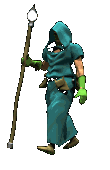إقترح ترجمة لهذا النبات الطبي Abies firma - Siebold.&Zucc. Momi Fir
 إقترح ترجمة لهذا النبات الطبي Abies firma - Siebold.&Zucc. Momi Fir
إقترح ترجمة لهذا النبات الطبي Abies firma - Siebold.&Zucc. Momi Fir
Abies firma -
Siebold.&Zucc.
Momi Fir

Physical Characteristics
icon of man icon of decid tree An evergreen Tree growing to 30m at a medium rate.
It is hardy to zone 6 and is frost tender. It is in leaf all year, in flower from April to May, and the seeds ripen from October to November. The flowers are monoecious (individual flowers are either male or female, but both sexes can be found on the same plant) and are pollinated by Wind.
The plant prefers light (sandy), medium (loamy) and heavy (clay) soils and can grow in heavy clay soil. The plant prefers acid and neutral soils. It can grow in full shade (deep woodland) semi-shade (light woodland) or no shade. It requires moist soil.
Habitats
Woodland Garden; Canopy;
Edible Uses
Edible Parts: Seed.
Seed - roasted[105, 177]. No more details are given, but the seed is very small and fiddly to utilize[K].
Medicinal Uses
Plants For A Future can not take any responsibility for any adverse effects from the use of plants. Always seek advice from a professional before using a plant medicinally.
None known
Other Uses
Wood.
Wood - light, soft, coarse grained, not very durable. Used for construction, pulp, etc[61].
Cultivation details
Prefers a good moist but not water-logged soil[1]. Grows well in heavy clay soils. Plants are very shade tolerant, especially when young, but growth is slower in dense shade[81]. Intolerant of atmospheric pollution[1]. Prefers slightly acid conditions, down to a pH of about 5[200]. Prefers growing on a north-facing slope[200]. New growth of the side shoots starts in April and this is very susceptible to damage by late frosts[11, 185]. The terminal buds do not open until mid-May and usually escape damage[185]. Trees are fairly fast growing when young, sending up new growth of 60cm a year from the age of about 6 years[185]. Side shoots grow with equal vigour, however and the tree often loses apical dominance[185]. Trees grow best in the Perthshire valleys of Scotland[11]. Trees should be planted into their permanent positions when they are quite small, between 30 and 90cm in height. Larger trees will check badly and hardly put on any growth for several years. This also badly affects root development and wind resistance[200]. The flowers are produced in axils of the previous year's shoots[275]. Plants are strongly outbreeding, self-fertilized seed usually grows poorly[200]. They hybridize freely with other members of this genus[200].
Propagation
Seed - sow early February in a greenhouse or outdoors in March[78]. Germination is often poor, usually taking about 6 - 8 weeks[78]. Stratification is said to produce a more even germination so it is probably best to sow the seed in a cold frame as soon as it is ripe in the autumn[80, 113]. The seed remains viable for up to 5 years if it is well stored[113]. When large enough to handle, prick the seedlings out into individual pots and grow them on for at least their first winter in pots. Plant them out into their permanent positions in late spring or early summer, after the last expected frosts. Alternatively, if you have sufficient seed, it is possible to sow in an outdoor seedbed. One report says that it is best to grow the seedlings on in the shade at a density of about 550 plants per square metre[78] whilst another report says that they are best grown on in a sunny position[80].
Siebold.&Zucc.
Momi Fir

| Author | Siebold.&Zucc. | Botanical references | 11, 58, 200 |
| Family | Pinaceae | Genus | Abies |
| Synonyms | Abies bifida - Siebold.&Zucc. Abies momi - Siebold. | ||
| Known Hazards | None known | ||
| Range | E. Asia - S. Japan | ||
| Habitat | Hills and mountains, C.& S. Japan[58]. | ||
| Edibility Rating | Medicinal Rating | 0 (1-5) | |
icon of man icon of decid tree An evergreen Tree growing to 30m at a medium rate.
It is hardy to zone 6 and is frost tender. It is in leaf all year, in flower from April to May, and the seeds ripen from October to November. The flowers are monoecious (individual flowers are either male or female, but both sexes can be found on the same plant) and are pollinated by Wind.
The plant prefers light (sandy), medium (loamy) and heavy (clay) soils and can grow in heavy clay soil. The plant prefers acid and neutral soils. It can grow in full shade (deep woodland) semi-shade (light woodland) or no shade. It requires moist soil.
Habitats
Woodland Garden; Canopy;
Edible Uses
Edible Parts: Seed.
Seed - roasted[105, 177]. No more details are given, but the seed is very small and fiddly to utilize[K].
Medicinal Uses
Plants For A Future can not take any responsibility for any adverse effects from the use of plants. Always seek advice from a professional before using a plant medicinally.
None known
Other Uses
Wood.
Wood - light, soft, coarse grained, not very durable. Used for construction, pulp, etc[61].
Cultivation details
Prefers a good moist but not water-logged soil[1]. Grows well in heavy clay soils. Plants are very shade tolerant, especially when young, but growth is slower in dense shade[81]. Intolerant of atmospheric pollution[1]. Prefers slightly acid conditions, down to a pH of about 5[200]. Prefers growing on a north-facing slope[200]. New growth of the side shoots starts in April and this is very susceptible to damage by late frosts[11, 185]. The terminal buds do not open until mid-May and usually escape damage[185]. Trees are fairly fast growing when young, sending up new growth of 60cm a year from the age of about 6 years[185]. Side shoots grow with equal vigour, however and the tree often loses apical dominance[185]. Trees grow best in the Perthshire valleys of Scotland[11]. Trees should be planted into their permanent positions when they are quite small, between 30 and 90cm in height. Larger trees will check badly and hardly put on any growth for several years. This also badly affects root development and wind resistance[200]. The flowers are produced in axils of the previous year's shoots[275]. Plants are strongly outbreeding, self-fertilized seed usually grows poorly[200]. They hybridize freely with other members of this genus[200].
Propagation
Seed - sow early February in a greenhouse or outdoors in March[78]. Germination is often poor, usually taking about 6 - 8 weeks[78]. Stratification is said to produce a more even germination so it is probably best to sow the seed in a cold frame as soon as it is ripe in the autumn[80, 113]. The seed remains viable for up to 5 years if it is well stored[113]. When large enough to handle, prick the seedlings out into individual pots and grow them on for at least their first winter in pots. Plant them out into their permanent positions in late spring or early summer, after the last expected frosts. Alternatively, if you have sufficient seed, it is possible to sow in an outdoor seedbed. One report says that it is best to grow the seedlings on in the shade at a density of about 550 plants per square metre[78] whilst another report says that they are best grown on in a sunny position[80].
 مواضيع مماثلة
مواضيع مماثلة» إقترح ترجمة لهذا النبات الطبي Abies alba - Mill. Silver Fir
» إقترح ترجمة لهذا النبات الطبي Abies amabilis - Douglas. ex Forbes. Red Fir
» إقترح ترجمة لهذا النبات الطبي Abies balsamea - (L.)Mill. Balsam Fir
» إقترح ترجمة لهذا النبات الطبي Abies cephalonica - Loudon. Grecian Fir
» إقترح ترجمة لهذا النبات الطبي Abies concolor - (Gordon.&Glend.)Lindl. ex Hildebrand. Colorado Fir
» إقترح ترجمة لهذا النبات الطبي Abies amabilis - Douglas. ex Forbes. Red Fir
» إقترح ترجمة لهذا النبات الطبي Abies balsamea - (L.)Mill. Balsam Fir
» إقترح ترجمة لهذا النبات الطبي Abies cephalonica - Loudon. Grecian Fir
» إقترح ترجمة لهذا النبات الطبي Abies concolor - (Gordon.&Glend.)Lindl. ex Hildebrand. Colorado Fir
صلاحيات هذا المنتدى:
لاتستطيع الرد على المواضيع في هذا المنتدى

 البوابة
البوابة أحدث الصور
أحدث الصور




